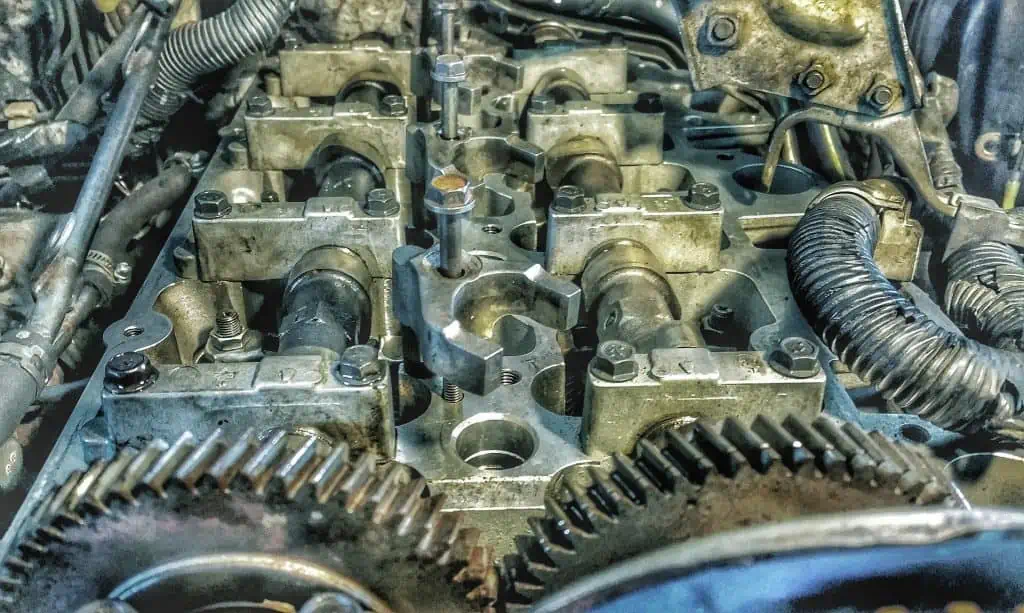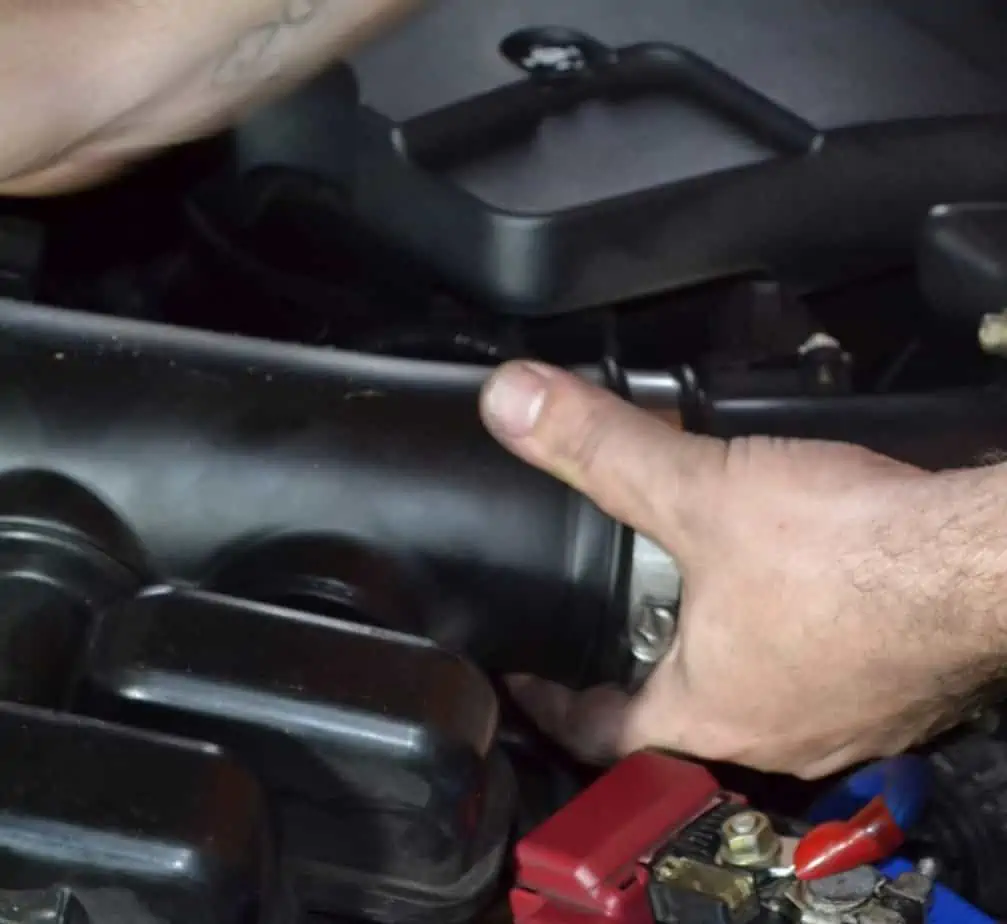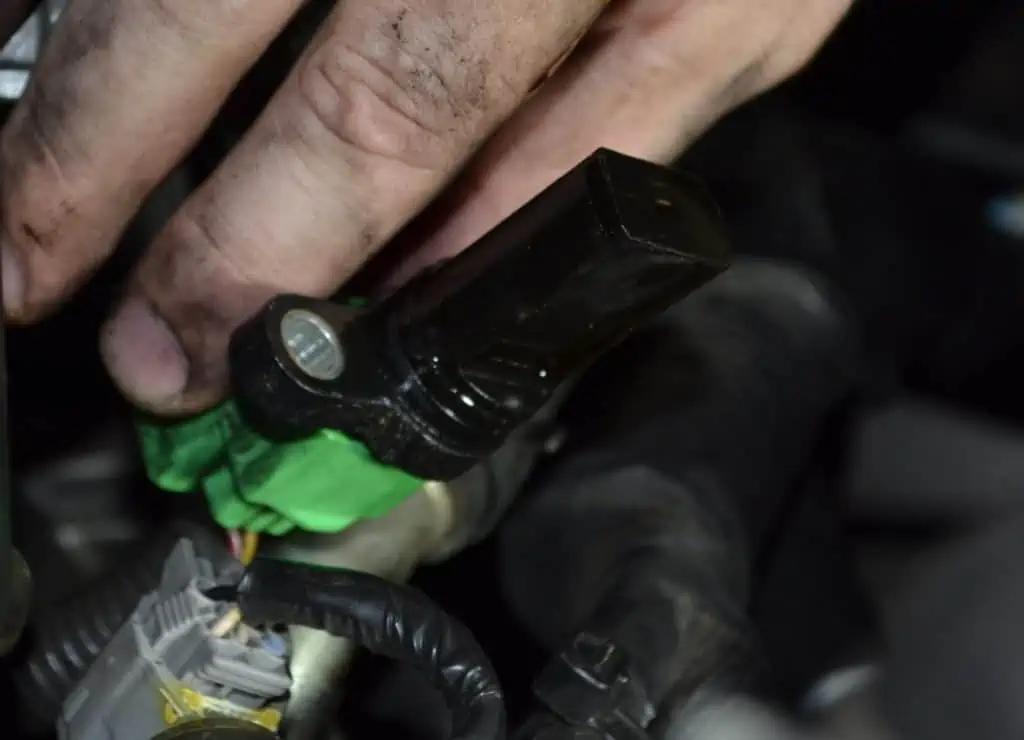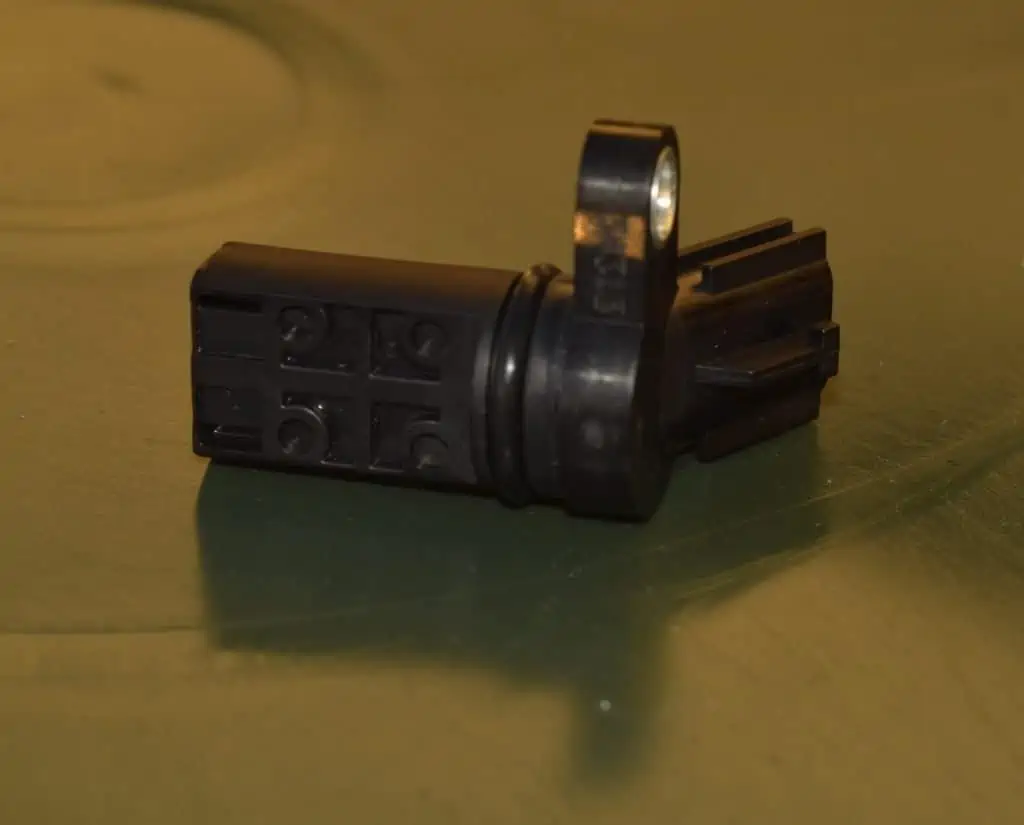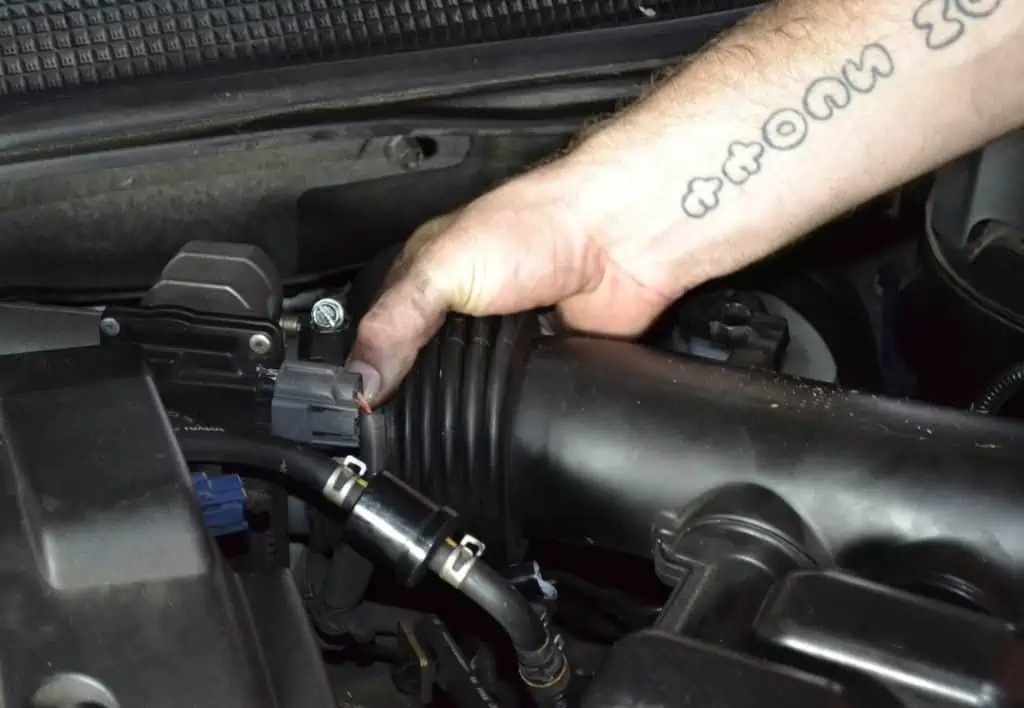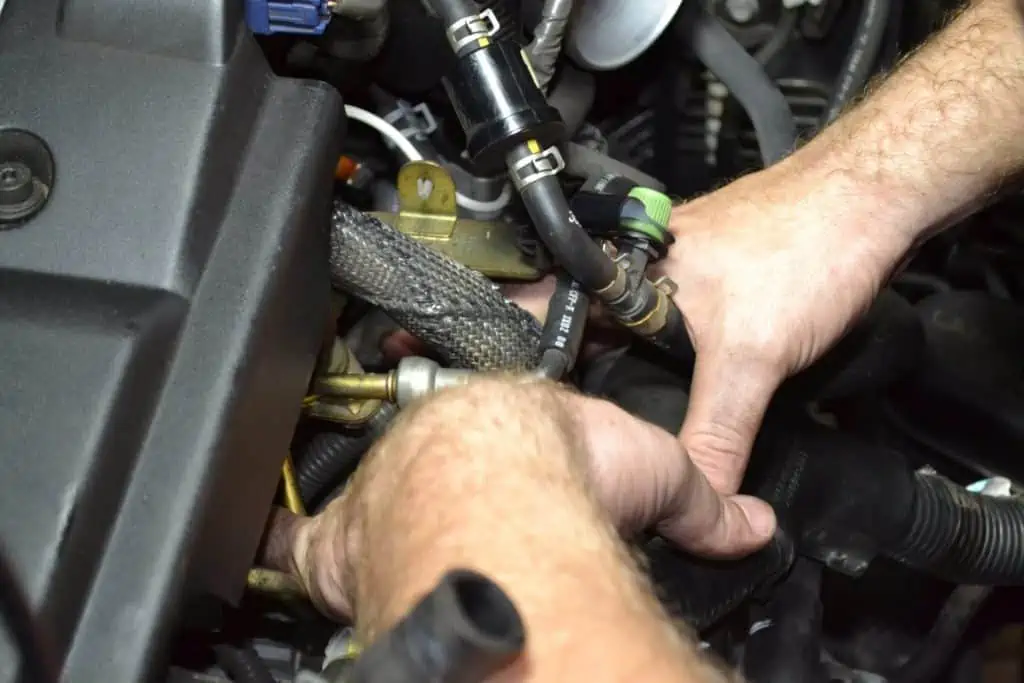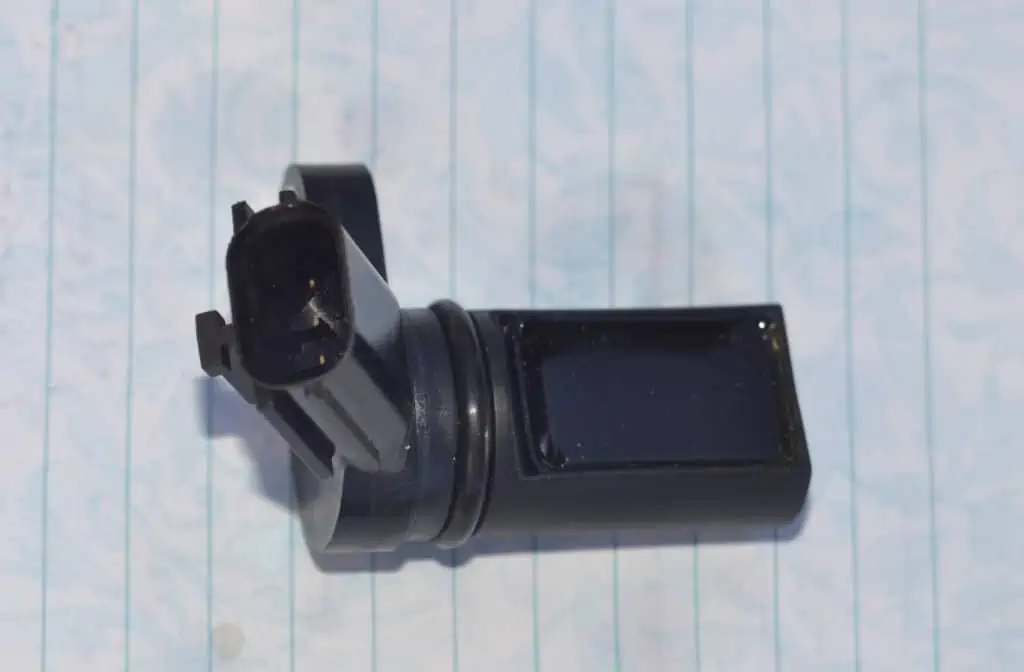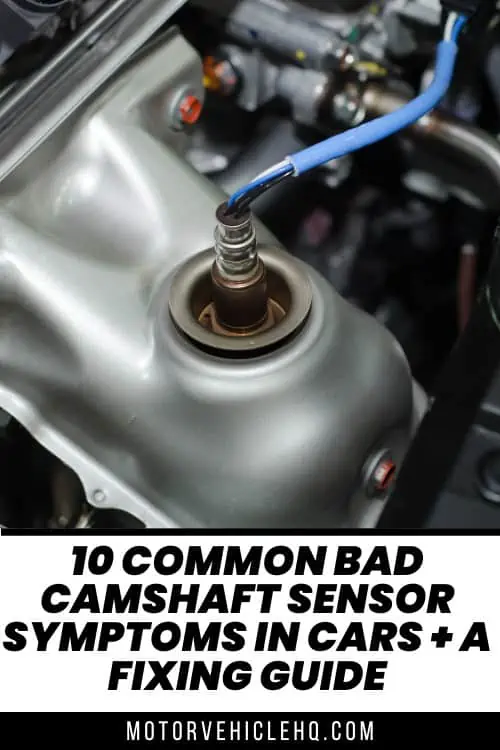Your driving experience will greatly benefit if you can identify the bad camshaft sensor symptoms. Why? As the camshaft sensor (CMP) keeps track of how quickly the camshaft rotates.
In essence, the camshaft is a rod or shaft with protrusions that open and close particular engine valves.
A camshaft sensor provides information to the vehicle’s computer or Engine Control Unit (ECU) about the order in which these valves open and close.
With this knowledge, the ECM can control the timing of the fuel injection and ignition. The efficiency of your car’s engine and, consequently, your driving pleasure, are both greatly influenced by its CMP sensors.
So what occurs when a camshaft sensor malfunctions? The condition may result in potentially dangerous circumstances, such as your car losing power in the middle of the road.
Timing accuracy is ensured via the camshaft sensor. Here’s how to identify a bad camshaft sensor.
Because the engine relies on data from both the crankshaft and camshaft sensors, a problem with any sensor could have an impact on data and performance.
When the engine is running or the vehicle is being driven, the camshaft sensor is always in operation. Because of this, the camshaft sensor may degrade over time. Cracks and oil leaks might also cause damage to it occasionally. The ring gear could potentially become worn and affect the readings.
Fortunately, this article will examine some of the signs of a failing CMP sensor to help you stay clear of these kinds of occurrences.
A Camshaft Sensor: What Is It?
The primary purpose of the camshaft sensor in your car is to cooperate with the crankshaft sensor. Its goal is to precisely pinpoint where the camshaft drive is located. It produces indications similar to the crankshaft sensor result. It aids in determining the precise moment the first cylinder is in the top dead center position for the engine.
Any camshaft sensor issue could affect data and performance because the engine depends on data from both the crankshaft and camshaft sensors.
The engine system uses the data produced by the camshaft for a variety of functions. In essence, the knowledge aids in the sequential injection’s first injection process. Additionally, it adjusts the knock control and supports the actuation signal for the pump nozzle injection system.
The basic idea behind how a camshaft sensor operates is the Hall principle. The voltage of the Hall IC, which is housed in the sensor head, changes as a result of the rotation of a ring gear on the camshaft, which is being scanned. This causes the control unit’s voltage transmission to shift.
The computerized system reads the information resulting from the modification electronically and evaluates it before recording it. In other words, a bad camshaft can also interfere with the crankshaft position sensor’s operation, which will ultimately lead to many issues with the engine performance of your car as a whole.
What Is the Mechanism of the Camshaft Sensor In a Car?
The camshaft sensor uses the magnet in its sensor to determine the direction of camshaft rotation. The direction of the magnetic field that the magnet emits per the placement of the detection teeth is affected by the rotational movement of the rotor. This happens as the timing rotor-linked detection tooth travels back and forth to the camshaft sensor.
The magnetic resistance element (MRE) value adjusts as a result, and the engine’s ECU voltage is then applied to the camshaft sensor. At the same time, the voltage changes due to the variation in the MRE resistance value.
The waveforms of the MREs’ outputs change over time and adopt a rectangular waveform that is influenced by a circuit inside the sensor. The engine’s ECU receives the MRE outputs or voltage that have been processed.
A Camshaft Sensor: Where Is It Located?
Because various auto manufacturers employ different mounting locations, the camshaft sensor’s location relies on the make and model of the vehicle. The camshaft sensor may be located anywhere, including next to the engine block, in the vicinity of the car’s lifter valley, behind the cylinder head, or in a compartment designed specifically for the sensor.
The camshaft sensor, however, is often located near the top of the engine in the majority of autos. It can be discovered around the timing cover, on the front or rear of the cylinder heads, or in the vicinity of the intake manifold. To find the proper location for the sensor, you might wish to consult the owner’s manual.
Which Ones are the Common Bad Camshaft Sensor Symptoms In Cars?
The CMP sensor in your car is a part, and like all parts of a vehicle’s system, it eventually wears out.
The check engine light on your dashboard or a difficult time starting your car are the most typical bad camshaft sensor symptoms. Additionally, you can observe problems like a misfiring engine or poor engine performance.
Although not all indications, these are the most typical ones. The ten bad camshaft sensor symptoms are listed in further detail below.
1. The Check Engine Light Blinks
The “Check Engine” light on your dashboard turning on is one of the more frequent signs of a failing CMP sensor. Having said that, some other problems could turn on the “Check Engine” light, thus this symptom is not limited to faulty CMP sensors. We advise utilizing an OBD2 scan tool to do a camshaft sensor test on your vehicle.
You may then determine if there is a problem with the CMP sensor based on the issue codes you receive from the scan. For instance, you might wish to contact a professional to inspect to identify the problem if you have a bad crankshaft position sensor but no codes.
Camshaft Position Sensor Replacement by Teresa Trimm / CC BY-SA 2.0. In most cars, the camshaft sensor is usually found near the top of the engine. It can be found next to the intake manifold, on the front or back of the cylinder heads, or in the area of the timing cover.
We advise against operating your car with the check engine light on. We warn that operating a car with the check engine light on could seriously harm the engine’s internals.
2. Problems In Starting the Engine
This is frequently a sign of degeneration caused by severely damaged CMP sensors in your car. The signal supplied to the car’s engine gets weaker the more the CMP sensor deteriorates.
This thus prevents the car’s ignition system from sparking. A spark is necessary for the combustion cycle to start; otherwise, the engine cannot start. Some contemporary cars attempt to solve this problem by utilizing the crankshaft position sensor’s signal.
The signal eventually turns off. At this stage, starting it becomes challenging, and you’ll occasionally find it difficult.
3. The Vehicle Stalls
When the CMP malfunctions, your car will experience stalling and backfiring or misfiring. The fuel injectors no longer receive commands to provide gasoline to the engine cylinders at the proper timings, which is why. When that occurs, the engine starts to lose power and stall. The engine can now enter what is referred to as the “limp” mode.
This occurs when the car locks into one gear and cannot accelerate any faster than a set pace. Due to inaccurate sensor readings, combustion inside the engine is prevented, which results in all of these symptoms.
4. The Fuel System Problems
The amount of fuel injected into the car’s engine cylinders is managed by the CMP sensor. It accomplishes this by communicating with the car’s computer, which enables it to regulate the timing and volume of fuel injected into the engine cylinders.
As there is no longer a pulse on your car’s fuel injectors, a failed CMP cannot carry out this function. The fuel system’s performance is impacted by this circumstance, which also creates other problems.
5. Car Accelerating Problems
The vehicle’s acceleration will eventually be impacted by the problems with fuel supply brought on by a malfunctioning CMP sensor. The signals sent by the malfunctioning CMP sensors are either incorrect or erratic, which is the cause.
This has an impact on the timing and volume of gasoline injected, which in turn has an impact on how the throttle reacts and eventually results in subpar acceleration.
6. A Problematic Transmission
In vehicles with automatic transmissions, a failing CMP sensor can cause transmission issues. Drivers with automatic transmissions will discover that the gearbox is stuck and that the car only shifts through one gear if the CMP sensor is malfunctioning. Additionally, this happens when the car is in limp mode.
Your car can become locked in one gear as a result, making it impossible to drive. This issue can be temporarily fixed by shutting off the engine and starting it again later.
7. A Reduced Fuel Efficiency
The engine may be injected with too much fuel due to inaccurate readings from a failed CMP sensor, which would be bad for fuel economy. Incorrect signals supplied by a bad camshaft sensor, which influence the timing of the fuel injection and cause unburned fuel to be expelled to the exhaust, can also result in poor fuel economy.
When the CMP sensors produce inaccurate data that impact the timing and duration of the fuel injectors, too much fuel is injected into the engine’s cylinders. The amount of gasoline that can be burned by the exhaust increases. The unburned fuel then escapes from your car’s exhaust system as black smoke, causing emission issues.
Camshaft Position Sensor by Teresa Trimm / CC BY-SA 2.0. The camshaft sensor can be examined visually and with the use of testing tools.
8. The Car Jerks
Your vehicle may jerk due to bad camshaft sensor symptoms. This occurs when the engine loses power while the car is moving or when the incorrect amount of fuel is injected. The car’s response to any of these circumstances is the jerking motion.
Is it safe to drive with bad camshaft sensor symptoms now that you are aware of the symptoms to watch out for? We advise that you address the issue as soon as you notice any of the aforementioned symptoms. By avoiding potential engine damage, expensive repairs, and possibly car accidents, you would be protecting yourself.
9. The Engine Experiences Harsh Idling
Never ignore an engine that is idle rough. A bumpy idle is mostly caused by the engine’s unsynchronized combustion cycles. This problem could be brought on by a bad camshaft sensor, EGR valve, or fuel pump. Regardless of the reason, finding the source of a rough idle can take some time.
10. Car Experiences Low Power Output
Your car’s engine may not burn fuel as efficiently as it should owing to a bad camshaft sensor, which will reduce the amount of power it produces. When you try to accelerate, you might notice this.
Your engine may occasionally enter “limp mode.” The manufacturer added this mechanism to guard against the engine suffering more damage.
No matter how many or how few of these symptoms you have, it’s critical that you have a professional check your car right away. It is most likely that a bad camshaft sensor is the root of the problem. Let’s go on to the following part now.
Testing for the Bad Camshaft Sensor Symptoms
The camshaft sensor can be examined visually and with the use of testing tools. On both of these approaches, we will provide you with detailed advice.
1. Examining the Bad Camshaft Sensor Visually
One of the simplest preventive actions you can take to make sure the sensor is operating at its best is to do a visual inspection. Pay special attention to the wire that transfers signals to and from the sensor when visually inspecting.
Examine the wire connectors for corrosion, damage, or contamination. To check for any loose connections, gently wiggle the connector.
It’s time to examine the wires themselves after you’ve examined the connector. To make sure that no electrical shorts are occurring, inspect the wire for fractures over its whole length. The wires may need to be replaced if you see any burns.
You need to be aware that there are typically two types of camshaft sensors available on the market before talking about testing processes. Given that each sort of sensor has a different testing process, it is crucial to comprehend how they differ.
2. Use of Equipment to Test a Magnetic Type Bad Camshaft Sensor
A “Magnetic type” sensor is a camshaft sensor with two wires. This kind of sensor can generate its voltage as an alternating current (AC). For testing, you must therefore carry a digital multimeter.
Through this apparatus, you can read the sensor’s AC voltage output. After receiving the results, compare them to the recommended voltage specified in your vehicle’s repair manual. Most likely, a small variance won’t be of any concern. A considerable discrepancy, though, can point to a sensor problem.
3. Use of Equipment to Test a Hall-Effect Type Bad Camshaft Sensor
The “Hall effect type” of the camshaft sensor is the alternative type. The three wires on these Hall-effect type sensors make them simple to recognize. These lines are used to transmit the voltage for the ground, the power, and the signal, respectively.
This kind of sensor can also be tested with a digital multimeter. These sensors generate a squared digital signal as opposed to magnetic type sensors, which generate an AC voltage.
Camshaft Position Sensor by Teresa Trimm / CC BY-SA 2.0. The camshaft sensor is always in use when the engine is operating or the car is being driven. The camshaft sensor could deteriorate as a result over time.
You can evaluate whether a replacement is required by comparing the measurements to the electrical readings listed in the repair manual.
You can perform additional checks to look for bad camshaft sensor symptoms in addition to the procedures indicated above. The resistance of the component to electricity is measured using a camshaft sensor resistance test.
This time around, the digital multimeter is also useful. The resistance value should ideally range from 200 to 900 ohms. An open sensor will read as having infinite resistance, in which case it needs to be replaced.
On the other hand, the camshaft sensor is put through a bench test after being taken out of the car. The voltage signal should ideally pulse when a metal object passes close to the magnet of the sensor.
If not, it could be necessary to replace your sensor. You can identify bad camshaft sensor symptoms before they lead to any significant problems by doing these tests regularly.
Will a Malfunctioning Camshaft Sensor Generate a Code?
Yes, bad camshaft sensor symptoms will typically generate a code and possibly illuminate your check engine light. That doesn’t necessarily imply that the sensor is defective, though.
Possible problems with the ECM’s interpretation of signals from the sensor or the connection connecting the sensor and the ECM both exist. Here are a few error codes that are frequently associated with bad camshaft sensor symptoms;
The P0340 CMP
This error number denotes a problem with the “A” circuit of the camshaft sensor. The P0340 error code may also appear during an OBD-II scan due to damaged wiring or loose connections.
This error may also be caused by problems with parts connected to the timing of internal combustion engines. The reasons for this problem can also lead to some of the symptoms indicated above, such as engine stalls, rough idling, and the check engine light.
The P0341 CMP
This particular code denotes a performance issue or a circuit range issue. The P0341 CMP error code will appear if the sensor is out of range or not timed correctly.
This error code can also be caused by other difficulties with the engine, such as issues with the VVT mechanism, a stretched timing belt, incorrect timing, or electrical interference.
The P0342 CMP
This error code will appear if a circuit’s low input is detected. The most frequent symptoms that go along with this error code include hard starts of the engine, stalls, misfires, and loss of power while driving.
A P0342 error could also be caused by a bad starter motor, a weak battery, a shorter wiring harness, or problems with the beginning system circuit.
Camshaft Position Sensor Location by Teresa Trimm / CC BY-SA 2.0. If you don’t replace the bad camshaft sensor yourself, the labor cost will range from $30 to $130 depending on which car dealer you get it replaced by.
The P0343 CMP
This fault code denotes a circuit with a high output. In plainer language, the PCM generates this code when it notices any bad camshaft sensor symptoms.
An issue with the timing component or the internal engine can also be the source of the P0343 error. The culprit, in this case, can be a PCM that requires software updating.
The P0344 CMP
When the PCM’s signal from the camshaft sensor, which is situated at the bank of the engine that houses cylinder 1 of the engine, is lost, the P0344 error code is set. This institution is also known as bank 1.
The PCM malfunction or bad camshaft sensor symptoms can be what’s causing this error code to appear. When you encounter a P0344 issue, you can anticipate the check engine light to come on and the engine to stall.
You can do the necessary repairs on your car using these codes to solve the problem. We have examined the most typical bad camshaft sensor symptoms thus far.
We have also examined the typical OBD-II error codes generated by faulty sensors. With such knowledge, you might want to consider changing the defective sensor. Let’s go on to the following section if that is the situation.
How Much Does a Camshaft Sensor Replacement Cost?
The price of a bad camshaft sensor replacement varies on the make and model of the vehicle, whether you choose to replace it yourself or hire a mechanic, as well as the location and type of business where you have it done. Depending on the car, the cost to do it yourself will range from $25 to $100.
You can anticipate paying $70 to $100, which is about average labor prices, depending on the vehicle and where you get the replacement done (automotive dealerships and luxury cars cost more).
Therefore, generally speaking, the cost of a bad camshaft sensor replacement ranges from $25 to $200.
Working with certified mechanics who are aware of what to do after replacing the bad camshaft sensor is your best option.
You can find the greatest pricing for the part and the related labor charges by doing a little market research.
The average cost of this component is low; for most cars, replacing a bad camshaft sensor ranges from $75 to $120. These costs can change depending on the manufacturer, your location, and the provider from whom you purchase it.
A luxury car’s replacement costs may be significantly greater. Depending on which car dealer you get it fixed by, the labor cost to replace the bad camshaft sensor if you don’t do it yourself will range from $30 to $130.
The cost of replacement would be almost reduced if you were to do it yourself. With the tools you probably already own, it is simply replaceable.
Are Camshaft Sensors Replaceable By the DIYer?
Yes. This is one of those simple tasks that practically anyone can complete on their own, saving you the minimum labor price (typically close to $100) that a dealership or repair shop will impose. The replacement should take 5 to 10 minutes.
Procedures for Changing a Bad Camshaft Sensor
- The negative battery cable should be disconnected.
- Track down the sensor. Usually, the top, front, or back of the engine is where it is located. It probably has a connector with two to three wires attached.
- To detach the wires from the sensor, open the sensor’s tab.
- The sensor’s mounting bolt that holds it to the engine should be removed. Typically, it is an 8mm or 10mm bolt.
- Slightly twist the sensor off as you remove it.
- The O-ring of the new sensor should be treated with a little motor oil.
- The new camshaft sensor should be mounted and fastened using the mounting bolt.
- Reconnect the sensor’s wire connector.
- Reconnect the battery’s negative terminal.
Camshaft Position Sensor by Teresa Trimm / CC BY-SA 2.0. The camshaft sensor is built to endure the lifetime of the vehicle, thus there is no set maintenance schedule for when it has to be changed.
Tip
The mechanic won’t often check for the bad camshaft sensor symptoms unless you specifically ask them to if you bring your car in for routine service or a tune-up.
Inform them that you believe the bad camshaft sensor symptoms may be the cause if you have noticed any of the bad camshaft sensor symptoms mentioned above. The camshaft sensor can then be readily inspected to see if it’s the source of these issues.
How Challenging Is It to Change a Bad Camshaft Sensor?
The make and model of your car will determine how simple it is to replace the bad camshaft sensor in the majority of car models. Take your car to a mechanic if you don’t feel confident fixing it yourself.
What Is the Turnaround Time for Bad Camshaft Sensor Replacement?
The time it takes to replace a bad camshaft sensor depends on a few things. These details include the car’s make and model as well as the location of the camshaft. Contrary to camshafts positioned on engines with awkward layouts, those mounted in conveniently accessible areas require less time to replace.
Having said that, it just takes a few hours to replace a camshaft. In other cases, it even requires significantly less. It is advised to have the camshaft changed by a qualified technician who can then reset the camshaft sensor.
How Long Is the Lifespan of a Camshaft Sensor?
There is no stated maintenance schedule for when the camshaft sensor should be updated because it is designed to last the lifetime of the vehicle. Only when it is broken or defective does it need to be replaced.
What Is the Total Number of Camshaft Sensors In a Car?
In a vehicle, there are two camshaft sensors. The magnetic and hall-effect camshaft sensors are what these are referred to as. Both kinds of sensors transmit voltage signals to the computer in the car.
The Hall-effect camshaft sensor requires an external power source to produce a digital signal, in contrast to the Magnetic camshaft sensor, which generates its current signal.
The Hall-effect camshaft sensor contains three wires, compared to the magnetic camshaft sensor’s two. The preferred sensors in contemporary vehicles are hall-effect camshaft sensors.
What Distinguishes a Camshaft Sensor from a Crankshaft Sensor?
The camshaft sensor monitors the camshaft’s movement and determines which cylinder of the engine is firing at any given moment.
The ECU receives this data about the camshaft movement and the cylinders and relays it to other engine functions including fuel injection and ignition sequences.
The crankshaft position sensor keeps track of the crankshaft, which drives the engine of the car by using the force generated by combustion on the piston.
The engine’s relative speed and the ignition timing are determined by the crankshaft position sensor.
Can I Still Drive If My Camshaft Sensor Is Broken?
Even though you most likely may, it is not advised to drive with bad camshaft sensor symptoms. Your car will probably run badly and might perhaps not start if you have bad camshaft sensor symptoms.
Camshaft Position Sensor design by Teresa Trimm / CC BY-SA 2.0. The camshaft sensor keeps track of the camshaft’s motion and establishes which engine cylinder is firing at any given time.
Although I wouldn’t advise doing that, it probably won’t result in your car shutting off. The sensor should be changed as soon as possible.
The Conclusion
Knowing the bad camshaft sensor symptoms might be the difference between a car that drives well, gets good gas mileage, and avoids accidents. That is why this article has listed the bad camshaft sensor symptoms to help you identify them early enough.
We advise consulting a specialist as soon as you become aware of any of these bad camshaft sensor symptoms. This will enable you to identify the issue and move forward with the necessary procedures to fix it.
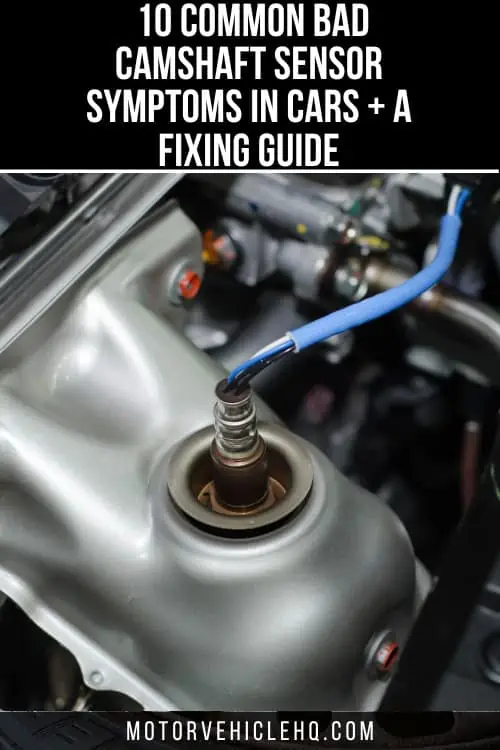

Nyangano Maurice specializes in vehicle troubleshooting and has more than 10 years of experience in the automobile industry. Over many years of experience as a car mechanic, he has acquired a broad range of skills, including engine repair, brake systems, electrical systems, and more. He frequently hosts community workshops and training programs to help motor vehicle owners understand their vehicles better.
